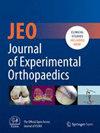Combined anterior cruciate ligament reconstruction and lateral meniscal root repair yields low failure rates, but inferior subjective outcomes compared to isolated anterior cruciate ligament reconstruction: A comparative study of independent tunnel and anterior cruciate ligament bone tunnel techniques
Abstract
Purpose
To assess the functional and subjective outcomes of combined anterior cruciate ligament reconstruction (ACLR) and lateral meniscal root tear (LMRT) repair. Additionally, to compare the use of an independent tunnel for LMRT repair with the ACL bone tunnel technique and to assess the failure rates of LMRT repair to isolated ACLR.
Methods
Patients who underwent primary ACLR and concomitant LMRT repair from May 2017 to May 2022 at Capio Artro Clinic, Stockholm, Sweden, were retrospectively identified and matched 1:3 (age, sex and graft type) with patients who underwent isolated ACLR during the same period. Functional outcomes, including range of motion (ROM), anterior knee laxity and isokinetic strength, were assessed preoperatively and at 6 months, and the knee injury and osteoarthritis outcome score (KOOS) at 2 years. Failure of LMRT repair was defined as the need for reoperation with meniscal resection during the follow-up period.
Results
A total of 84 patients were included (mean age 31.1 ± 11.1 years; 61.9% male). LMRT repair failure occurred in 7.1% of cases. No significant differences were observed between tunnel techniques in ROM, laxity, or strength. At 2 years, KOOS scores were significantly lower in the ACLR + LMRT group compared to the isolated ACLR group in pain (86.1 ± 15.2 vs. 91.3 ± 13.3, p = 0.039), symptoms (79.3 ± 19.1 vs. 86.3 ± 17.3, p = 0.017), sport (69.2 ± 26.4 vs. 82.1 ± 25.3, p = 0.017) and quality of life (61.2 ± 25.3 vs. 75.3 ± 26.2, p = 0.03). Only 29.2% of patients in the LMRT group achieved a patient acceptable symptom state (PASS), compared to 65.2% in the isolated ACLR group (p < 0.01).
Conclusion
Combined ACLR and LMRT repair resulted in a 7.1% failure rate. However, the addition of LMRT repair results in lower subjective outcomes compared to isolated ACLR. The use of an independent tibial tunnel for LMRT repair does not confer additional clinical benefit over the shared ACL tunnel technique.
Level of Evidence
Level III.





 求助内容:
求助内容: 应助结果提醒方式:
应助结果提醒方式:


